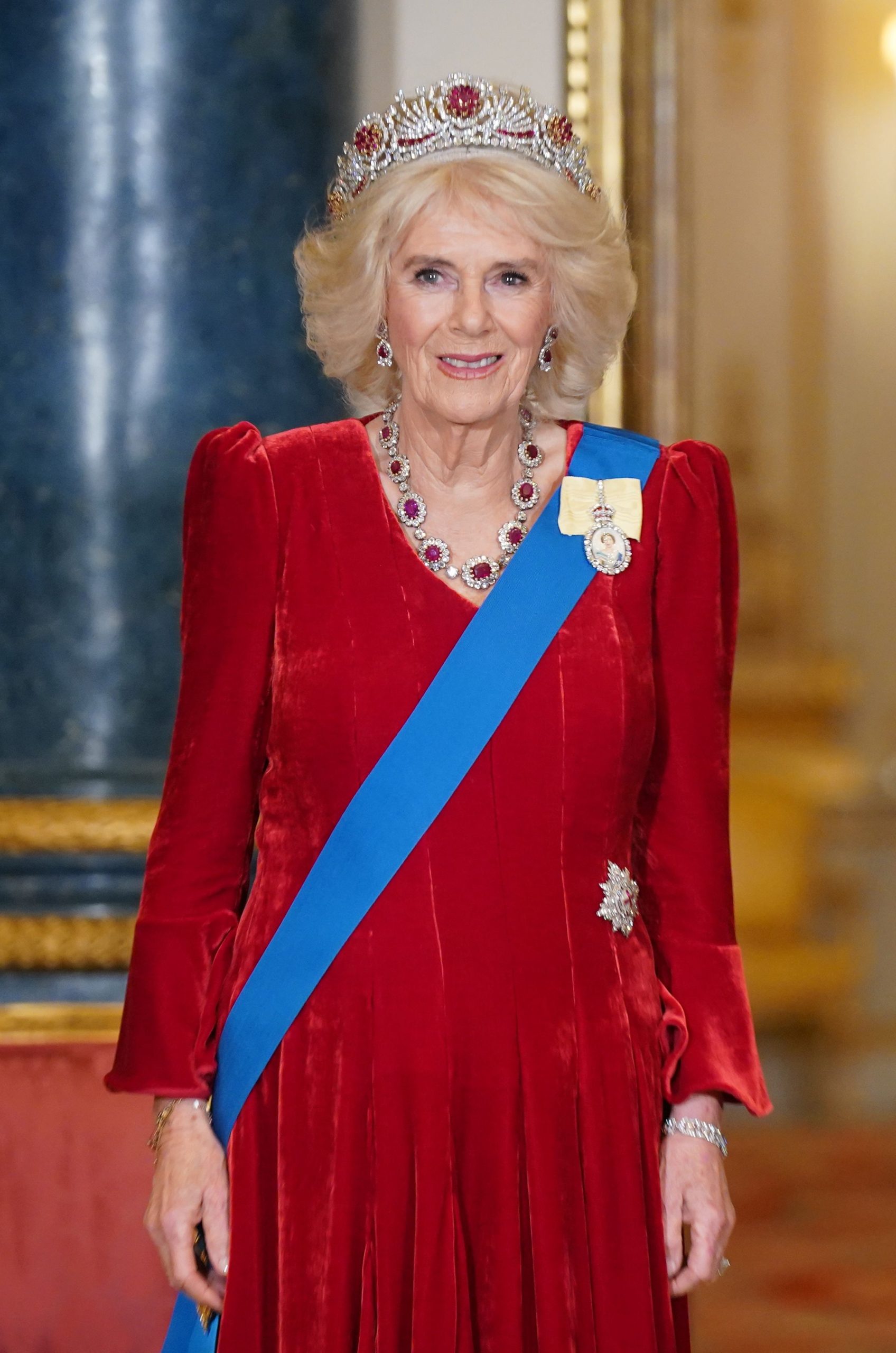Queen Camilla’s tiara was worn a few times by Queen Elizabeth II
In June, King Charles III and Queen Camilla celebrated the visit of Emperor Naruhito and Empress Masako of Japan with an official banquet, and the king used the event as an opportunity to show how familiar he is with some important aspects of Japanese culture. For the occasion, Camilla chose a curious piece of jewelry with a somewhat controversial history: the Burmese Ruby Tiara.
History
The Burmese Ruby Tiara was commissioned by Queen Elizabeth II in 1973. Made by jeweler Garrard & Co., the tiara was created using 96 rubies that were a gift from the people of Burma (now Myanmar) on the occasion of the Queen’s marriage to Prince Philip in 1947. According to traditional Burmese belief, these rubies have the ability to protect against illness and disease. In addition to the rubies, the tiara is made of diamonds that were sourced from an ancient crown tiara.
Design
The tiara’s design is both elegant and symbolic. It is made up of a series of stylized roses, with rubies at the center of the flowers and diamond petals. This design not only pays homage to the rose, a symbol often associated with England, but also embodies the Burmese belief in the protective properties of rubies.
Controversies
One of the controversies involving the tiara occurred in 2019, when Queen Elizabeth II wore it during a state banquet with then-President of the United States Donald Trump. This event generated a lot of controversy due to the polarized political and social climate at the time. The choice of the tiara was seen by some as a subtle message. Rubies are traditionally associated with protection against disease and danger, which many interpreted as a form of indirect statement by the queen in a period of political and social tension. This interpretation, of course, has not been officially confirmed, but speculations about it were widely discussed in the media and social networks.

